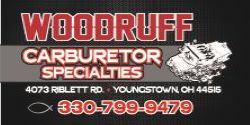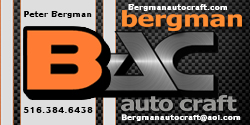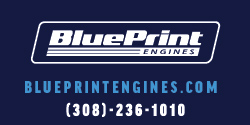In a word IMHFO
NO,
it's
not just a straightforward answer
it's far more complicated than that...
If you want it done correctly, not run into problems later...
Here's a lil' stuff to chew on
I know some here will say;
"it's going overboard or too much info"
or to
dumb it down
Well I disagree, I don't do that...
I didn't like it when it was tried on me "way back when",
when I didn't know **** either... almost 50 years ago
IMO you will never have too much good info,
to decide what's right, for your specific build/engine choices etc.
Mostly
no question is a bad question when 1st learning...
Now,
I may not answer them, I may ignore you or the thread
& leave it to someone else...
But don't be afraid to ask...
Usually, someone here will answer it...
you need a camshaft that matches
many other parts to/of the car
& what your intended end use ?, "actually is",
what you can tolerate, not some pie-in-the-sky "what if's"
since you don't have that knowledge
you will be dependent
on a trustworthy & honest &/or probably a skilled tech to lead you thru such a deal
adequate cooling system, is needed
you will be creating more heat now,
added HP is a function of 'the creation of heat'/more BTUs
(sort of, long explanation)
make sure it clear of all rust & old antifreeze, a good flush would be in order
what is the
actual compression,
cylinder bore size "stock bore" is 4.250"
on a stock 383 that hasn't been bored
other common bore/piston sizes
0.010" over 4.260"
0.030" over 4.280"
0.040" over 4.290"
0.060" over 4.310"
383cid "stock stroke" is 3.38"
bore in inches x bore x stroke x 8 x .7854 = cids
(stroke to can/will effect compression, longer stroke more compression)
*** also some other determining factors are as followed;
how much down in the bore the, pistons are at TDC & the bore size
combined with combustion chamber size
(stock 906 heads are like 88-96ccs)
& head gasket thickness stock is a steel shim at 0.020"
most aftermarket head-gaskets like FelPro permatorque
are 0.039" torqued down
is all needed to make an accurate compression estimate
or a dome etc. sticking up
*** you can also use a compression tester,
it'll get you in the ballpark
(or leak-down tester, to see if the engine ring or valve seal is good)
if you haven't already fallen asleep after all that 
we are just getting started
The actual amount of true
piston-to-valve clearances
intake valve to piston coming up on TDC
that clearance
is usually the biggest issues
(caution;
Generally, on a stock 383/440 most OE iron heads (like the 906s)
some will need to have the top of the valve guides machined down
& many will change too a different style or valve seal while you're at it
or it will/could have interference with the base of the valve spring retainers
or keepers/locks, it's about a max gross valve lift of 0.510"-0.520"-ish
depending on manufacturing differences/tolerances,
the gross valve lift = camshaft lift x rocker ratios,
before running into serious problems in the 68-70 906 heads)
Gears
depending on duration, much lower gears could be required
Converter
again depending on duration, much more gear & converter, may be required
the converter is a very important part of the combo
especially with a "more aggressive" camshaft change
or a better clutch for a manual
Intake/induction, stock or alum. aftermarket
hood clearance (?),
a K&N or Moroso drop base air cleaner may cure that issue
an Edelbrock Performer RPM is a great alum. dual plane street manifold
make great power too, from just off idle, 1,500 to about 6,200rpm/wide RPM range
Exhaust,
something in the 2-1/4" - 2-1/2" duals out the back range
don't skimp on mufflers
use with an H or X pipe about after where the trans-cross member is located
Headers ?
1-3/4" to 1-7/8" tube size for a 383 is more than plenty,
with 3" or 3-1/2" collectors
(could be a necessity depending on build/style selections & choice)
they will certainly help it breathe
"
much better, maybe 10% flow across the board"
also about the same amount of, 10% more HP/TQ #s too...
the engine is just a huge air pump
what goes in
must be able to come out freely
Cylinder heads, stock or aftermarket/alum or cast iron
& what mods/machining need to be performed to have "said camshaft"
valve springs, valves, rockers, push-rods (needed for that specific camshaft)
Carburation (size & style/brand) a 750cfm (or 770cfm-780cfm vacuum) is plenty
(
I prefer Holley style carbs, or the new Street Demon 3 bbl, looks damn good
I'm personally not a huge fan of the Edelbrock/Webber 'Carter AFB or AVS 'knockoff carbs'
some people here/MoPar land, really love them... I'm not one of them people)
a 650cfm is probably plenty, but nothing wrong with a lil' bigger
as long as it's jetted & set up correctly,
air restriction (too small of a carb) can be a huge HP killer
& IMO for mainly street driving, a vacuum secondary with an electric choke
is all you'd probably need...
Fuel pump could be another consideration,
a good quality Mechanical fuel pump is usually adequate
the fuel pump rod material too, dependending on what style of camshaft
is chosen
*** a billet or roller will need a special bronze tipped rod...
or EFI (a bit more expensive & a bit more technical too)
I won't go into that here, that'd take 2 pages alone

Good
hot Ignition "system",
to help burn all that extra fuel you'll be adding
(like mentioned above)
an advanced curve, with lighter springs inside the distributor,
to have the mechanical advance come in quicker
for street use a vacuum advance pot is good
(you may want to look into an advance' limiter disc, from FBO @ 4secondsflat.com)
*** or even a different material on the cam gear, on the oil pump drive,
that gear material depends on what type of camshaft/materials chosen
a billet like hydraulic roller or solid roller, with require a special bronzed gear
A nice hot spark
a good hot coil & low ohm resistance plug & coil wires
Timing chain & gear set
a nice double roller, timing chain & gear set,
with multiple settings adv. or retard on the crank gear,
so it can be advanced or retarded as the build style requires
(
I advised to degree the camshaft in too, but many people at your level
don't or won't)
finally the camshaft
for a reg. driver 'stop light to stop light' street warrior
I'd suggest something within these ranges
*** 274*-ish to about 284*s of advertised duration
(
much more than that level of duration, the vacuum will suffer,
power brakes would need a pump, AC would be out)
will wake it up a tone, still give it a tumping idle,
that bucket tee, bucket tee, bucket tee, bucket tee
sound at like 950rpm idle
stock OE HP 1968-70 383-440 cam
is in the 264* - 268* advertised duration range
at about 0.464"-0.468" range/gross valve lift hydraulic flat tappet...
Something in the
*** 0.484" gross valve lift
(
with a 1.5:1, a true stock stamped steel (is more like 1.48:1) rocker ratio)
to maybe
on the more aggressive side of
*** 0.510"- 0.520"-ish (with a real 1.5:1 rockers)
gross valve lift range
still be very street-able, much more than that will require specialty,
rockers, pushrod, shafts etc.
*** it will really wake it up, sound really good too
you could go with a split duration intake & exhaust, will have different lift & duration
usually more lift & duration on the exhaust...
*** Cylinder heads continued;
This may piss of some people, or purists, but it's reality/truth...
"
deal with it"
The org. production heads on a BBM '
are a serious choke point'
(
aside from the org. Max Wedge heads or 426 Hemi,
but we aren't talking about either of them)
In reality, it's been said;
To be like like having a '
small-block Chevy head' (very simular design & size ports)
on a big block Chrysler, with a much bigger bore...
they need more port volume, then they can make "more serious" power...
(It's;
why the 'max wedge' head had was org. designed, & why the new alum. heads
that flow so much better like 40cfm - 50+cfm better than best 'stock cast iron heads',
right out of the box, they flow better than many mildly ported 'cast iron heads' too...
And with many of the new heads, with bigger valves too, in many cases they are
"so much better too", much better port design, even in the 'std size port' opening...
Also most alum. heads run cooler generally too, it will dissipate heat quicker,
*** be carefull on a 4.25" bore too big of an intake valve, over a 2.14"
will generally require some grinding at the very top of the cylinders
(use a head gasket for a template) to unshroud the intake valves,
*** that area that flow around them, at wide open intake lift,
will be blocked some otherwise...
*** 400s with the bigger 4.350" bore or the 440s with a 4.32" bore or bigger
aren't a problem generally)
Also
*** make sure to soak the lifters in '
break in oil', for at least a few hrs,
overnight pref.
*** make sure you use a
break in oil with zinc added
when it starts up the 1st time
*** do not let it idle very long at all after the 1st start up,
it needs to be ran
at like 2,500 rpm at like 15 min.'s, to break it in properly,
or it can/will go flat
keep it outside & a hose handy to refill the radiator after it's purged the bubbles
or thermostat has opened, or it could get really hot...
after all the rest of the considerations
it may dictate what is needed above
that may help or just confuse you even more,
you asked
not every aspect was even covered,
but it gives some good detailed info to help decide
maybe, even sound a tad bit more knowledgeable
when on the phone, when they ask you for specs of your build
it will also help educate you, on what's involved in a camshaft change
I hope some of that helps,
you make a good informed decission
on what cam & the mods required
Good luck



















